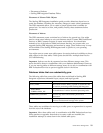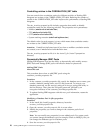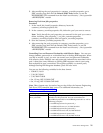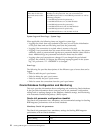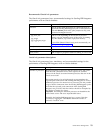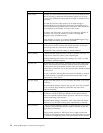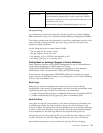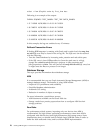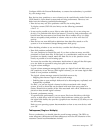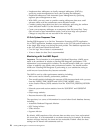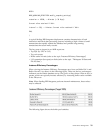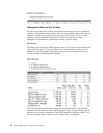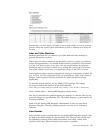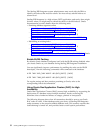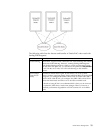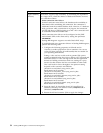Configure ASM with External Redundancy to ensure that redundancy is provided
by your storage array.
Raw devices (raw partitions or raw volumes) can be used directly under Oracle on
UNIX-based or Linux-based systems and can help performance. However, raw
disks have the following potential disadvantages:
v Raw devices may not solve problems with file size writing limits.
To display current UNIX file size limits, run the following command:
ulimit -a
v It may not be possible to move files to other disk drives if you are using raw
devices. If a particular disk drive has intense I/O activity, and performance will
benefit from the movement of an Oracle data file to another drive, it is likely
that no acceptably-sized partition or volume exists on a drive with less I/O
activity.
v Raw devices are more difficult to administer than data files stored on a file
system or in an Automatic Storage Management disk group.
When deciding whether to use raw devices, consider the following issues:
v Raw disk partition availability
Use raw partitions for Oracle files only if you have at least as many raw disk
partitions as Oracle data files. If disk space is a consideration, and the raw disk
partitions are already created, match the data file size to the partition size as
closely as possible to avoid wasting space.
You must also consider the performance implications of using all the disk space
on a few disks as opposed to using less space on more disks.
v Logical volume manager
Logical volume managers manage disk space at a logical level and hide some of
the complexity of raw devices. With logical volumes, you can create logical disks
based on raw partition availability.
The logical volume manager controls fixed-disk resources by:
– Mapping data between logical and physical storage
– Enabling data to span multiple disks and to be discontiguous, replicated, and
dynamically expanded
For RAC, you can use logical volumes for drives associated with a single
system, as well as those that can be shared with more than one system of a
cluster. Shared drives enables all the files associated with a RAC database to be
placed on these shared logical volumes.
v Dynamic performance tuning
To optimize disk performance, you can move files from disk drives with high
activity to disk drives with low activity. Most hardware vendors who provide
the logical disk facility also provide a graphical user interface (GUI) that you can
use for tuning.
Refer to your operating system documentation on how to use raw devices with
your OS.
Tablespaces (Single or Multiple)
Prior to production, you should plan the overall storage strategy. The DDLs to
create temporary tablespaces and data tablespaces are left to the discretion of the
customer. General recommendations include:
Performance Management 27



